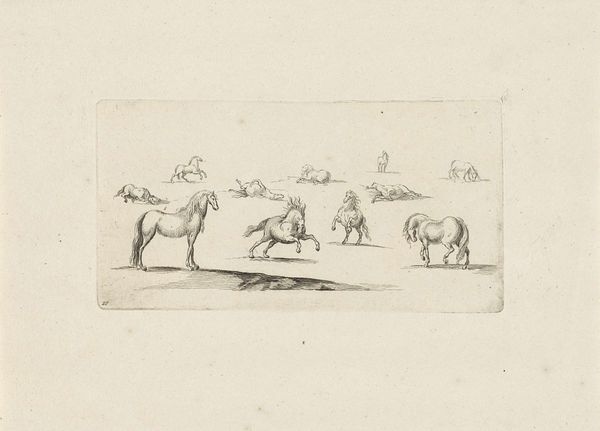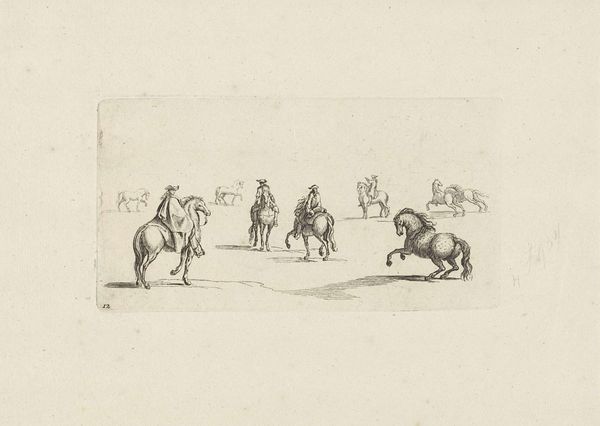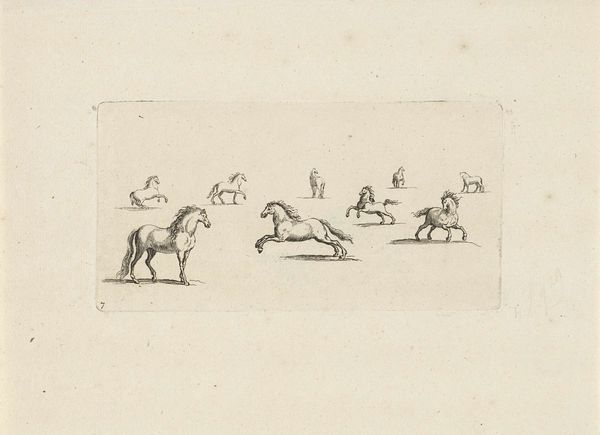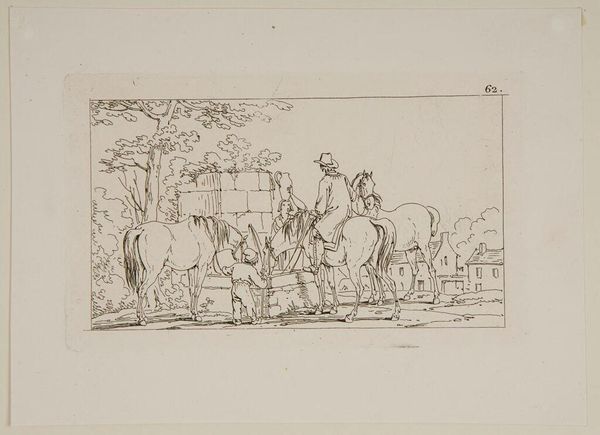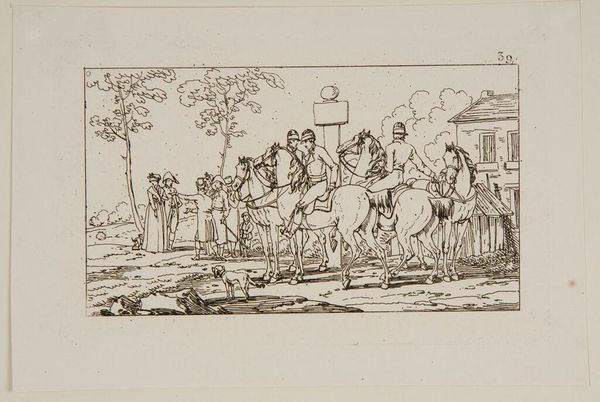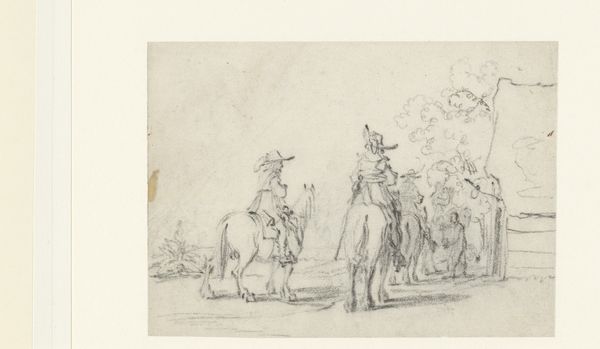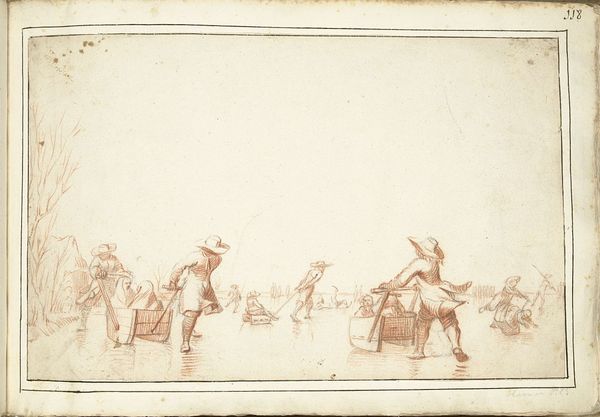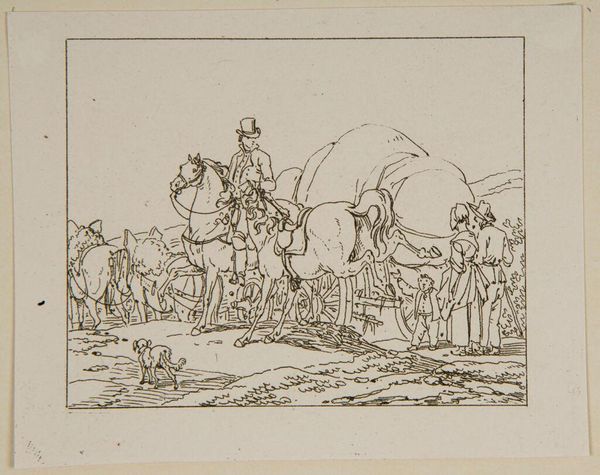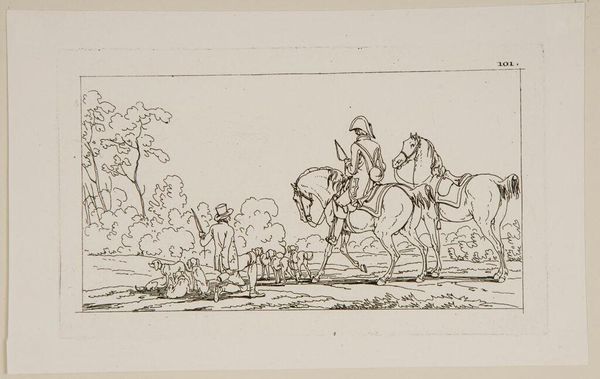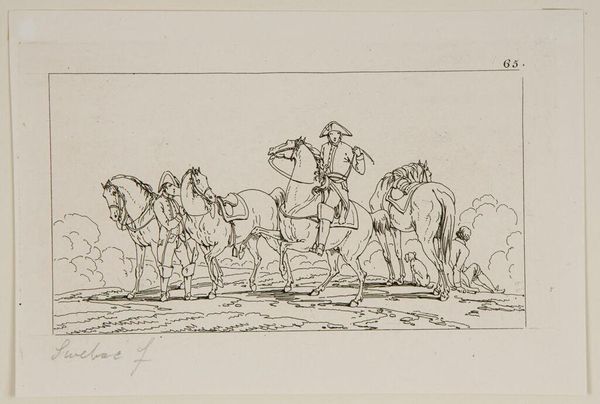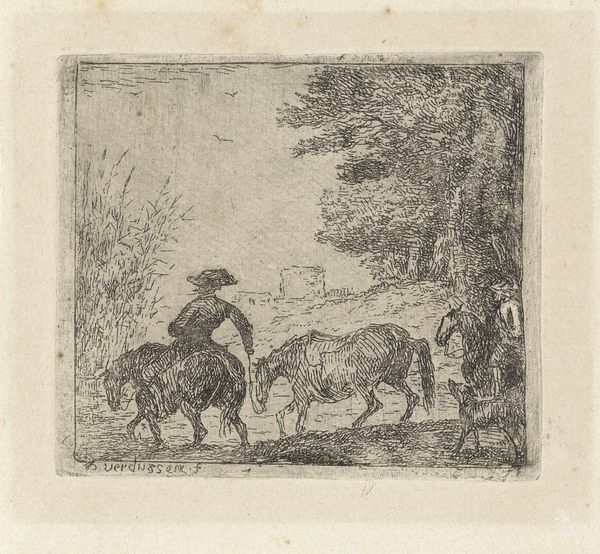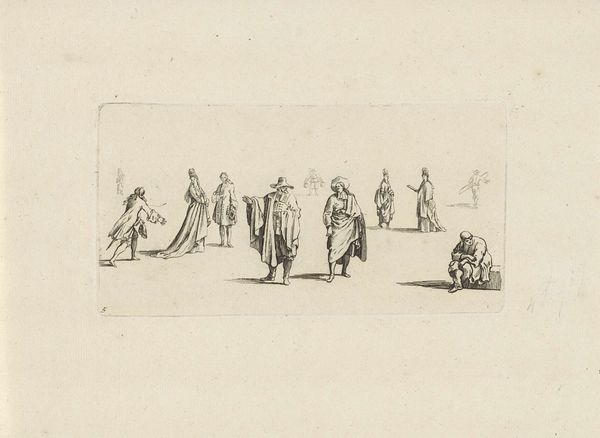
drawing, paper, ink, pencil
#
drawing
#
baroque
#
landscape
#
figuration
#
paper
#
ink
#
pen-ink sketch
#
pencil
#
horse
#
genre-painting
Dimensions: height 80 mm, width 154 mm
Copyright: Rijks Museum: Open Domain
Curator: This pen and pencil drawing is entitled "Studieblad met drie ruiters en paarden" which translates to "Study Sheet with three Riders and Horses." Created anonymously between 1675 and 1711, it's currently held here at the Rijksmuseum. Editor: It’s rather austere, wouldn’t you say? The minimal use of line and subtle gradations of tone almost drain the scene of vitality, despite the dynamism of the horses' poses. Curator: Yes, the lightness certainly contrasts with the heavier, more bombastic equestrian portraiture often associated with that era. I find myself wondering about the function of such a piece. Was it a preparatory sketch, a personal study, or perhaps a reflection on the shifting roles of the aristocracy? Editor: A study is precisely what it feels like. Look at the varying degrees of finish on the horses, almost as if exploring different methods of depiction within a single sheet. Note how the artist seems to isolate essential elements: the musculature, the fall of light, the angle of a leg... Curator: Right, and considering the historical context, we must remember that horsemanship was not merely a sport or skill; it was deeply intertwined with military power, class structure, and even gendered expectations. The control of the horse mirroring control of society, so to speak. Were these riders symbols of dominion, or simply exercises in artistic skill? Editor: One might consider how the blankness of the surrounding space contributes to a sense of abstraction, paradoxically detaching the figures from any immediate context, highlighting pure form and movement instead. It reduces them to the archetypal. Curator: The anonymous nature of the artwork allows us to project contemporary ideas onto it, whether questions of gender and power or artistic expression. It resists singular interpretations, remaining open to diverse critical lenses. Editor: An evocative piece in its reticence, prompting inquiry into how meaning is constructed through subtle lines and empty spaces. It seems the less we know, the more room we have to interpret.
Comments
No comments
Be the first to comment and join the conversation on the ultimate creative platform.
